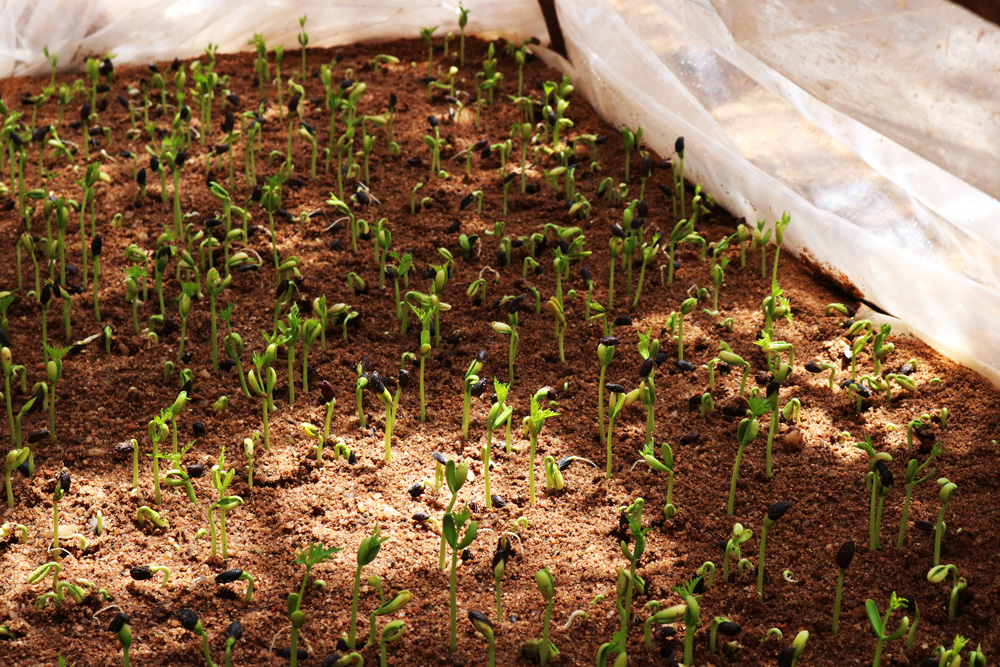Agroforestry is a sustainable, proven and efficient land management system. However, despite proven benefits, agroforestry does not receive the attention it deserves and investments in agroforestry are insufficient. Here are five ways to change the status quo, as expressed by the experts behind the new “Achieving the Global Goals through Agroforestry” report, launched on October 1, 2018 in Stockholm, Sweden:
1. Agroforestry is more than just trees and crops
At its core agroforestry is what it seems when you read it: combining cultivation of trees and crops on the same land. This is nothing new and has been practised by farmers for a long time without any particular label. However, since agroforestry is highly versatile, it is hard to communicate not only what it is, but also what its benefits are. To achieve success, one needs to know about the nature of this method, because merely putting a couple of trees on your farm won’t necessarily bring good results. The types of trees and where you plant them matter. Creating a dynamic landscape where all elements work for the people and the environment is key.
2. What gets measured gets done
Since agroforestry is both about trees and crops, responsibility for agroforestry projects often fall between the mandates of forestry and agriculture agencies. While this doesn’t mean any agroforestry project ever gets off the ground, this obscure position makes it difficult to collect reliable statistics on project implementation, as well as how to allocate the budget and to appoint the responsible agency. Lack of data and responsibility can also lead to a vicious cycle where potential funders have an excuse to say “why invest a lot in something with vague or questionable rates of success?” What is more, research has shown that managing trees and crops by separate domains can harm both livelihoods and food security, as land being classified as forest can often rule out any other use or collection of resources. Mainstreaming the term “agroforestry” into various policies without separating it into trees and crops can help.
3. Time to prioritise sustainable production
When looking at agriculture, we usually focus on two things: the price of a product in the market and yield numbers. Agroforestry is either and both at the same time. It is fair to say that agroforestry requires time and resource investment. However, it has proven to enhance ecosystem services by improving soil texture and reducing erosion. Additionally, farmers who practice agroforestry spend less time on water and firewood collection. Currently, market systems don’t include the prices for ecosystem destruction or deforestation and pollution caused by intensive agriculture, and that is why conventional production seems cheaper. It is also fair to say that yields in agroforestry farms may not be as high as the yields on monoculture farms which use pesticides and synthetic fertilizers. But diversified production, like agroforestry, helps farmers build resilience, providing nutritious food, alternative income and fuel while ensuring their land is healthy and productive in the long run. Alternative ways of measuring productivity should be discussed more in policy circles, agroforestry could be a good case in point.
4. Agroforestry unites!
The cross-sector nature of this approach is a great opportunity! When people come together they share knowledge and increase awareness. Agroforestry can help break silos, bringing academics and practitioners closer to farmers, cooperatives and those working with value chains. This collaborative nature can help foster sustainable landscapes, creating habitats for plant and animal species on a larger scale.
5. Agroforestry needs land reforms
Without a sound business case, there is little incentive for farmers or investors to get interested in agroforestry. Land rights and land ownership is another challenge. Since many of the world’s small-scale farmers don’t own the land they cultivate they are reluctant to make long-term investments, required for agroforestry because trees take time to grow. In addition, as long as nature and agriculture are framed as opposing forces, with trees being fit squarely in the ”forest/nature box” in terms of climate benefits or carbon sequestration, agroforestry will mostly be thought of as patching a wound arrangement rather than as a solution tot he problem. Creating demand by building a stronger business case and value chains for agroforestry products can provide incentives for donors, governments and investors to improve land rights to ensure production.
This article is based on the launch event of the Agroforestry network’s report presented at FORES on October 1st 2018. Presenting the report during the event was Linda Andersson, Policy Officer, Agroforestry & Sustainable Agriculture, Vi-Skogen and Anders Malmer, professor SLU.
Check out the full report here!
Panelists were:
Anders Wijkman, Co-president Club of Rome and Chair, Governing Board of Climate-KIC;
Line Gordon, Director and associate professor, Stockholm Resilience Centre;
Maria van Berlekom, Lead Policy Specialist for Environment and Climate Change, Sida;
Mia Crawford, Deputy Director Global Agenda, Swedish Ministry for Foreign Affairs.
Moderator: Mattias Goldmann, CEO, Fores.
